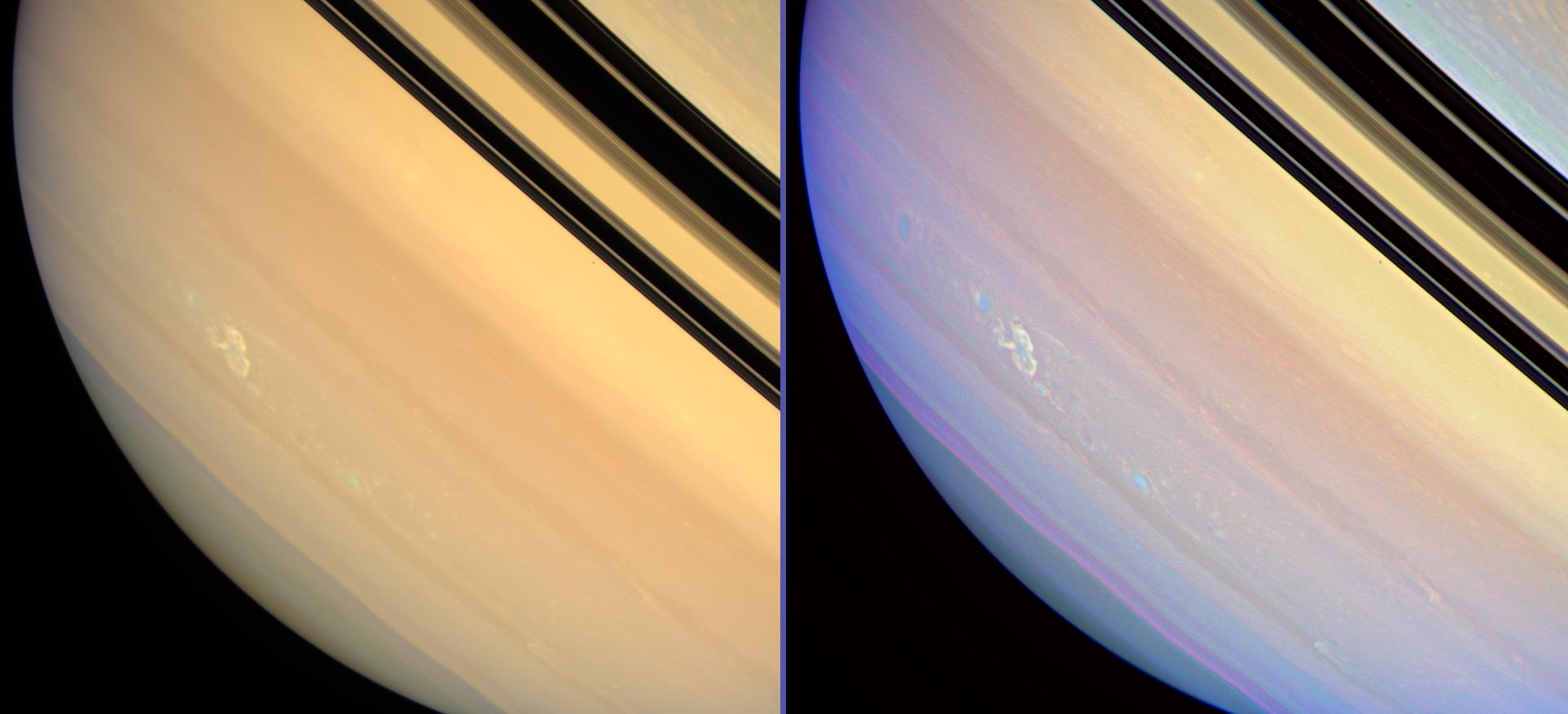'Deep Learning' Algorithm Reveals Huge Saturn Storm in New Light

A new "deep learning" algorithm that could help scientists better understand planetary atmospheres has passed its first big test, a new study reports.
The software, called PlanetNet, mapped out a monster 2008 Saturn storm system in detail using data gathered by NASA's Cassini spacecraft, which studied the ringed planet up close from 2004 through 2017.
"Missions like Cassini gather enormous amounts of data, but classical techniques for analysis have drawbacks, either in the accuracy of information that can be extracted or in the time they take to perform. Deep learning enables pattern recognition across diverse, multiple data sets," study co-lead author Ingo Waldmann, deputy director of the Center for Space and Exoplanet Data at University College London in England, said in a statement.
Related: Amazing Saturn Photos From NASA's Cassini Orbiter
"This gives us the potential to analyze atmospheric phenomena over large areas and from different viewing angles, and to make new associations between the shape of features and the chemical and physical properties that create them," Waldmann added.
PlanetNet searches data sets for evidence of "clustering" in cloud structure and atmospheric composition, then uses such information to generate precise maps. Waldmann and study co-leader Caitlin Griffith, of the University of Arizona's Lunar and Planetary Laboratory, trained and tested the algorithm using data gathered by Cassini's Visible and Infrared Mapping Spectrometer (VIMS) instrument.
For the new study, which was published online today (April 29) in the journal Nature Astronomy, the duo chose a data set containing VIMS observations of a multiple-storm system that boiled on Saturn in February 2008. This was meant to be a challenge, for the system was complex and quite large. Combined, its various components covered area equivalent to about 70% of Earth's surface, the researchers said.
Breaking space news, the latest updates on rocket launches, skywatching events and more!
PlanetNet took this information and ran with it, providing new insights into the storms. For example, its maps showed that a previously observed S-shaped cloud of ammonia was actually part of a much bigger upwelling that surrounded a dark storm. And PlanetNet detected a similar feature around a different storm, suggesting that ammonia-ice upwellings are common in Saturn's atmosphere, the researchers said.
"PlanetNet enables us to analyze much bigger volumes of data, and this gives insights into the large-scale dynamics of Saturn," Griffith said in the same statement. "The results reveal atmospheric features that were previously undetected. PlanetNet can easily be adapted to other datasets and planets, making it an invaluable potential tool for many future missions."
- Photos: Monster Storm Rages on Saturn
- Saturn Quiz: How Well Do You Know the Ringed Planet?
- Cassini's 13 Greatest Discoveries During Its 13 Years at Saturn
Mike Wall's book about the search for alien life, "Out There" (Grand Central Publishing, 2018; illustrated by Karl Tate), is out now. Follow him on Twitter @michaeldwall. Follow us on Twitter @Spacedotcom or Facebook.

Michael Wall is a Senior Space Writer with Space.com and joined the team in 2010. He primarily covers exoplanets, spaceflight and military space, but has been known to dabble in the space art beat. His book about the search for alien life, "Out There," was published on Nov. 13, 2018. Before becoming a science writer, Michael worked as a herpetologist and wildlife biologist. He has a Ph.D. in evolutionary biology from the University of Sydney, Australia, a bachelor's degree from the University of Arizona, and a graduate certificate in science writing from the University of California, Santa Cruz. To find out what his latest project is, you can follow Michael on Twitter.

